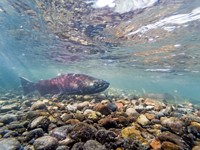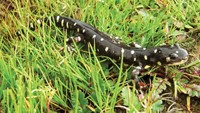Advertisement
Grab your lab coat. Let's get started
Welcome!
Welcome!
Create an account below to get 6 C&EN articles per month, receive newsletters and more - all free.
It seems this is your first time logging in online. Please enter the following information to continue.
As an ACS member you automatically get access to this site. All we need is few more details to create your reading experience.
Not you? Sign in with a different account.
Not you? Sign in with a different account.
ERROR 1
ERROR 1
ERROR 2
ERROR 2
ERROR 2
ERROR 2
ERROR 2
Password and Confirm password must match.
If you have an ACS member number, please enter it here so we can link this account to your membership. (optional)
ERROR 2
ACS values your privacy. By submitting your information, you are gaining access to C&EN and subscribing to our weekly newsletter. We use the information you provide to make your reading experience better, and we will never sell your data to third party members.
Pesticides
Sulfoxaflor may put dozens of species at risk of extinction
US EPA seeks measures to protect endangered species from common insecticide
by Britt E. Erickson
April 5, 2023
| A version of this story appeared in
Volume 101, Issue 12

Hailed as a safer alternative to organophosphates, neonicotinoids, and other insecticides, sulfoxaflor may harm hundreds of endangered species and is likely to put 63 of them at risk of extinction, the US Environmental Protection Agency (EPA) concludes in a final evaluation, released March 30. The agency is working with the Fish and Wildlife Service, National Marine Fisheries Service, and pesticide makers to mitigate some of the risks identified in the report.
The EPA released a draft evaluation of the risks of sulfoxaflor to endangered species in July 2022. Since then, it has proposed changes to the pesticide’s label to help protect vulnerable species. The agency included those changes in its final evaluation and still determined that sulfoxaflor is likely to harm more than 462 endangered species, including more than 300 plants.
Sulfoxaflor is used to combat aphids and other difficult-to-control insects on several crops. It requires fewer applications than other commonly used insecticides, according to the EPA. But environmental groups and beekeepers have been raising concerns for many years about the insecticide’s harmful effects on bees. The EPA’s final evaluation shows that the effects go beyond just bees.
“In spite of efforts to lessen the harm it causes, this one insecticide is likely to drive the Miami tiger beetle, Dakota skipper, rusty patched bumblebee and 60 other endangered species to extinction,” Lori Ann Burd, environmental health program director at the Center for Biological Diversity, says in a statement. “The EPA needs to prohibit sulfoxaflor’s use immediately in the places where these endangered species live,” she says.





Join the conversation
Contact the reporter
Submit a Letter to the Editor for publication
Engage with us on Twitter